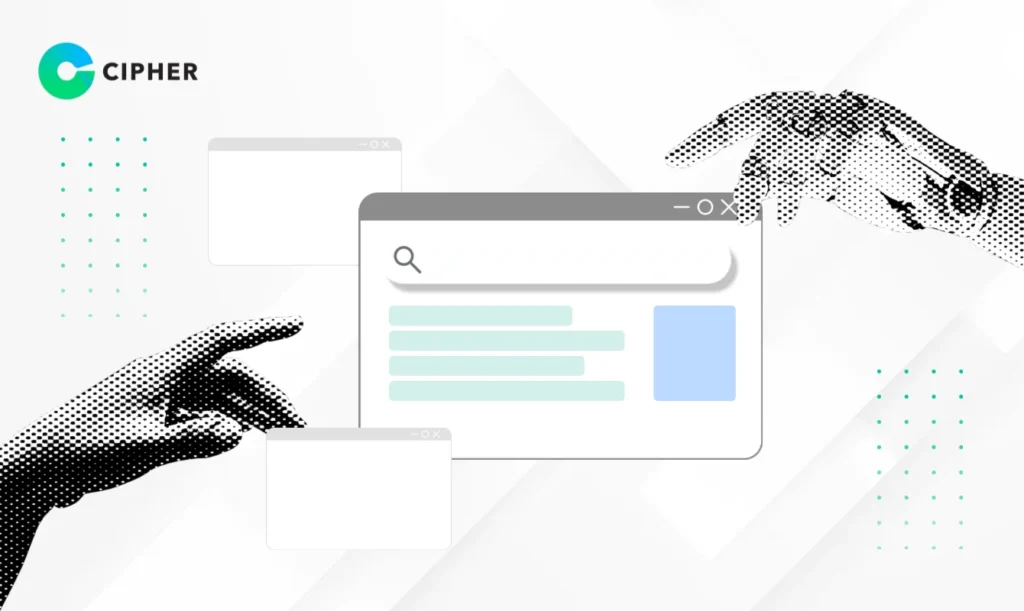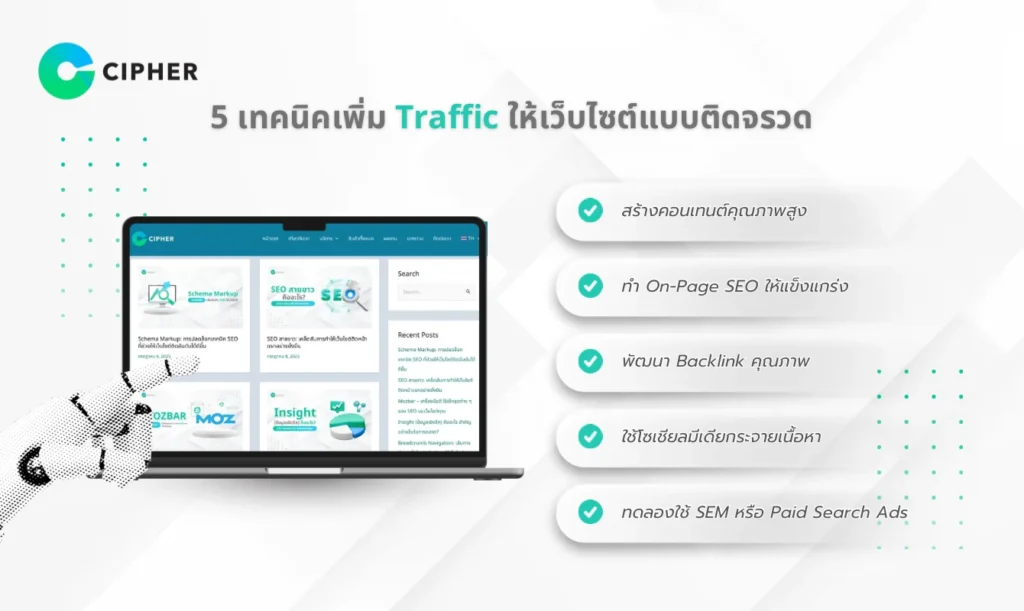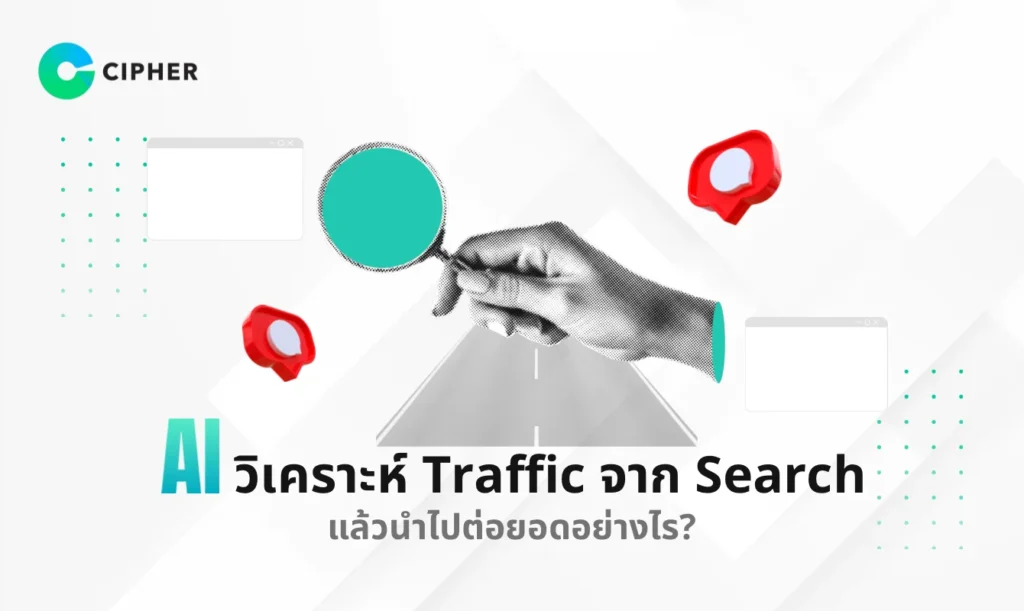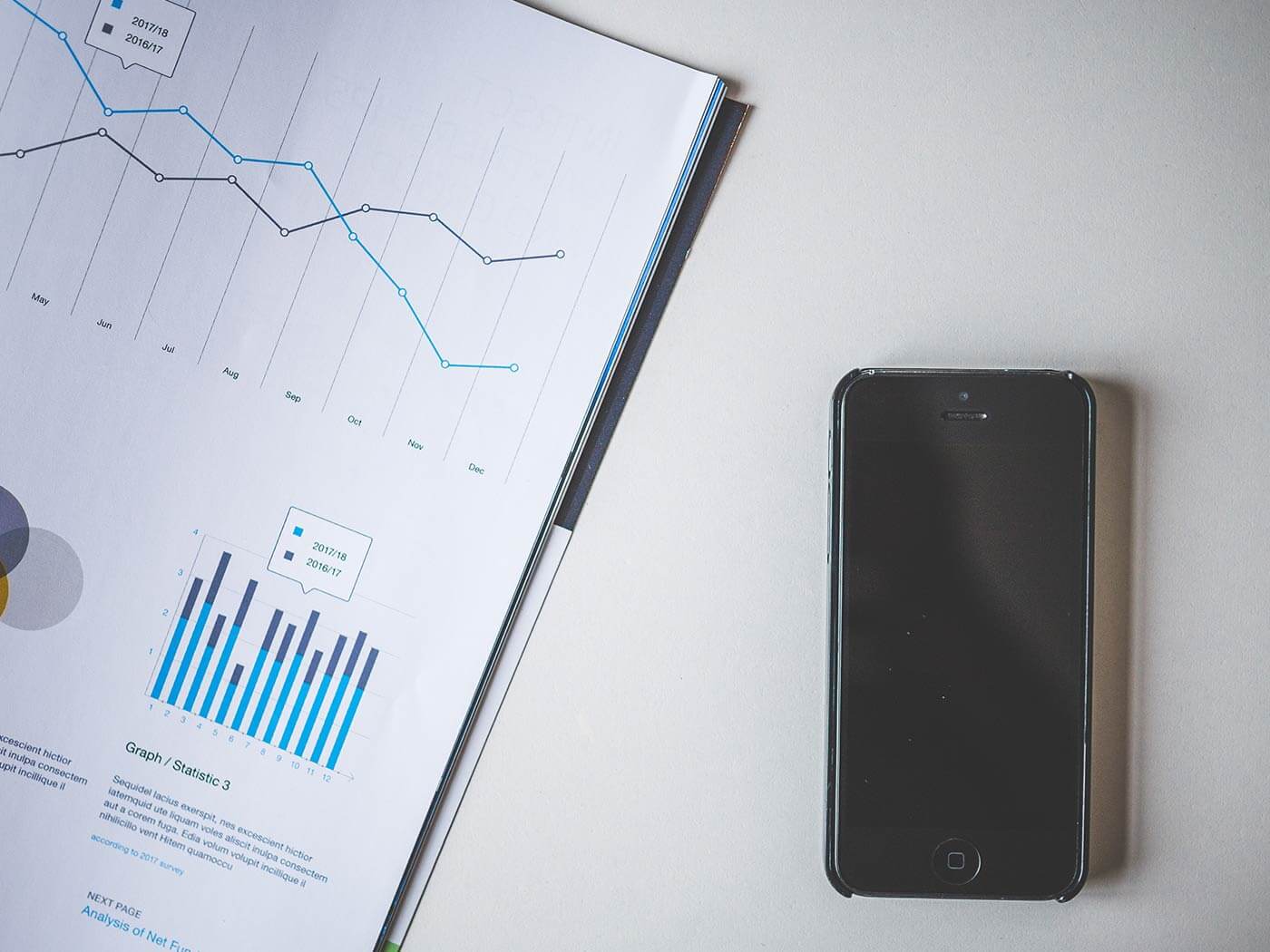In an era where AI technology is rapidly transforming the digital world, online businesses must adapt quickly, especially when it comes to implementing AI traffic analysis for both traditional search engines and new AI search platforms. Understanding SEO fundamentals remains crucial. This article will help you understand how to use AI traffic analysis techniques and leverage these insights to increase your business opportunities.
Table of Contents
What is Traffic and Why It Is Important for Online Businesses?

Just like foot traffic in shopping malls, online traffic refers to the number of visitors to your website. The more people visit your mall, the higher your selling opportunities—similarly, websites with high traffic have greater chances of converting visitors into customers.
This makes comprehensive AI traffic analysis a crucial strategy that businesses shouldn’t overlook.
In digital marketing terms, traffic represents website visits from various channels, whether through Google clicks, social media shares, or direct URL entries. These numbers are important indicators of your website’s effectiveness, and modern AI traffic analysis tools can help you understand them better.
Understanding Different Types of Traffic for Effective AI Traffic Analysis
Before delving into AI traffic analysis techniques, let’s understand the different types of traffic, as each has different origins and importance:
- Organic Traffic – Visitors who find your site through search engines like Google or Bing without paid advertising. This traffic results from good SEO practices and typically yields sustainable long-term results.
- Direct Traffic – People who type your website URL directly or click from bookmarks, reflecting brand recognition and trustworthiness.
- Referral Traffic – Visits from links on other websites (backlinks) pointing to your site. Higher quality backlinks increase traffic potential.
- Paid Traffic – Visitors who come through advertisements like Google Ads or social media campaigns, which can quickly boost traffic but often with short-term effects.
- Social Traffic – Visitors who click links from social media platforms like Facebook, Instagram, or TikTok.
- AI Traffic – The volume of visitors who click through answers from AI Search tools like Google AI Overviews, Perplexity AI, ChatGPT, and others when AI pulls content from your website to answer questions with references back to your site.
AI Traffic - A Quality Indicator Revealed Through AI Traffic Analysis
AI Traffic is becoming an important indicator for websites in an era where AI plays an increasingly significant role. When your content is selected by AI to answer user questions, it means your content has quality and meets AI SEO requirements well. Detailed AI traffic analysis helps provide a clear picture of how effective your content is in the AI world.
The key difference between traffic from traditional search engines and AI Search is:
- Traditional Search Engines: Display results as a list of links (Ten Blue Links). When users click, it generates Organic Traffic.
- New AI Search: Provides brief summary answers with source references. When users click on reference links, it creates AI Traffic that can be tracked through AI traffic analysis tools.
Understanding AI Search User Personas Through AI Traffic Analysis
1. Deep Information Seekers
- Behavior: Need detailed information, often asking complex questions requiring comprehensive answers
- Needs: Complete content with credible references and in-depth explanations
- How to attract: Create ultimate guides or in-depth articles covering all aspects, with analytical data and supporting statistics
2. Urgent Problem Solvers
- Behavior: Need quick answers for immediate problems, often using “How to” questions
- Needs: Immediately actionable advice with clear, direct steps
- How to attract: Create step-by-step guides with solutions presented in sequential order, accompanied by illustrations or examples
3. Purchase Decision Makers
- Behavior: Comparing options before making a purchase decision, often asking comparison questions or seeking recommendations
- Needs: Unbiased comparative information, real user reviews, clear pros and cons
- How to attract: Create comparison articles like “X vs Y” or “Top 10 Best…” with impartial analysis of strengths and weaknesses
4. Quick Fact Checkers
- Behavior: Need short, concise information, asking specific questions
- Needs: Direct, quick, straightforward answers
- How to attract: Create FAQ content, bullet points, or quick answers that provide clear, concise information
5. Trend Followers
- Behavior: Want the latest information, new trends, or industry updates
- Needs: Up-to-date content referencing current events and latest news
- How to attract: Create articles like “Latest Trends”, “2025 Update”, or “What’s New” with regularly updated information
Creating content that matches these personas increases the chances that AI will use your content to answer user questions. AI traffic analysis helps you identify which personas visit your website the most.
How to Implement AI Traffic Analysis with Google Analytics 4
Measuring AI traffic isn’t difficult through Google Analytics 4 (GA4), an important tool for AI traffic analysis. Follow these simple steps:
- Create an Exploration Report in GA4
- Select “Page referrer” as Dimension
- Select “Sessions” as Metric
- Filter Dimensions using this Match Regex formula:
^https://(www.meta.ai|www.perplexity.ai|chat.openai.com|claude.ai|chat.mistral.ai|gemini.google.com|bard.google.com|chatgpt.com|copilot.microsoft.com)(/.*)?$
With these steps, you’ll see which AI tools send traffic to your website, how much comes from each, and the total number of users. This AI traffic analysis approach allows you to measure the effectiveness of your content from AI’s perspective and adjust your SEO strategy accordingly.
Changing Search Behavior Detected Through AI Traffic Analysis
However, according to the latest data in 2025, Google still dominates the search engine market share in Thailand at 97.11% and worldwide at 79.07%. This shows that traditional SEO remains very important, though adaptation to the AI era should begin. Modern AI traffic analysis tools can help you balance your efforts between traditional and AI-driven traffic sources.
AI Traffic Analysis Tools for Businesses
Tracking how your brand is discovered through AI Search can be done with various AI traffic analysis tools:
- Google Analytics 4 – Following the steps recommended above
- AI Search Tracker – A tool that helps track searches through AI like ChatGPT, Gemini, and Perplexity
- AI Traffic Analyzer – Shows data about traffic volume from AI Search
These AI traffic analysis tools can display various metrics such as:
- Views, Sessions, and Key Events generated by AI
- Number of Sessions generated by AI each month
- Charts showing the percentage of Sessions by different AI tools
- Number of Sessions by Page and AI
Using AI Traffic Analysis to Increase Your Brand's Visibility on AI Search
The key to making your brand discoverable on AI Search is creating high-quality content that’s valuable to readers while maintaining strong SEO practices. This is important because most AI Search tools extract information from major search engines like Google or Bing. AI traffic analysis helps you see what type of content AI prefers to use when answering user questions.
Ways to increase your brand’s visibility on AI Search based on AI traffic analysis insights:
- Create high-quality content that addresses user needs
- ทำ On-Page SEO ให้แข็งแกร่ง
- Develop quality backlinks to increase website credibility
- Use social media to distribute content
- Implement Digital PR to build brand awareness
5 Techniques to Boost Website Traffic Based on AI Traffic Analysis

Increasing traffic to your website is an important goal for every online business. AI traffic analysis combined with the following techniques will help increase website visitors effectively:
- Create High-Quality Content – People still search using keywords they need, so creating content that meets readers’ needs is essential. Consider:
- Fresh content with updated information
- Information from real experiences or experts (E-E-A-T Factor)
- Content that matches users’ Search Intent
- Strengthen On-Page SEO – No matter how good your article is, without proper On-Page SEO, it’s difficult to rank well. Focus on:
- Proper keyword placement
- Attractive Title & Meta Description writing
- Formatting with Heading Tags
- Adding Alt Text to images
- Develop Quality Backlinks – Good backlinks help search engines see your website as trustworthy, which affects rankings and increases Referral Traffic. AI traffic analysis can show which referral sources drive the most engaged visitors.
- Use Social Media to Distribute Content – Sharing content on social media platforms increases Social Traffic and builds brand awareness. Consider using social media advertising to increase visibility. AI traffic analysis helps you determine which platforms deliver the most valuable traffic.
- Experiment with SEM or Paid Search Ads – For new websites with low traffic, Google Ads or other advertising can quickly stimulate traffic, but careful planning is needed to ensure return on investment. Apply AI traffic analysis to optimize campaign targeting and messaging.
Professional AI Traffic Analysis Tools
In addition to basic AI traffic analysis, you can use various specialized tools to monitor traffic volume for both your site and competitors:
- Google Analytics – A free tool that helps analyze traffic and user behavior in detail
- SEMrush – Helps view website traffic data and backlinks for both your site and competitors
- Ahrefs – Used to analyze competitor traffic and find keyword rankings
Each of these platforms offers unique AI traffic analysis capabilities that can enhance your understanding of your website’s performance.
AI Traffic Analysis Services from CIPHER
At CIPHER, we offer comprehensive services for AI traffic analysis to help your business grow in the digital age:
AI Traffic Insights
SEO for AI Era
Content Optimization
AI Traffic Monitoring
Digital PR for AI Visibility
Digital public relations services designed to increase sales through AI SEO and increase opportunities for your brand to be mentioned on AI Search, with performance tracked through AI traffic analysis.
Conclusion
Frequently Asked Questions About AI Traffic Analysis
How is AI Traffic different from Organic Traffic in AI traffic analysis?
Is it necessary to adjust SEO strategies based on AI traffic analysis?
How can I measure traffic from AI using AI traffic analysis?
What type of content is most likely to be used by AI according to AI traffic analysis?
Content that provides complete information, verifiable facts, credible references, clear structure, and meets user needs—especially How-to content, FAQs, and in-depth articles that provide knowledge. AI traffic analysis can help you identify which content formats perform best with AI tools.





